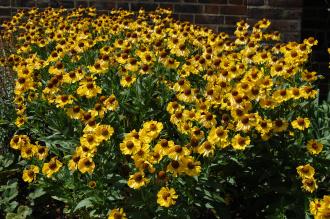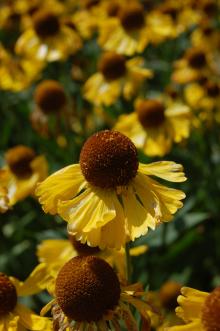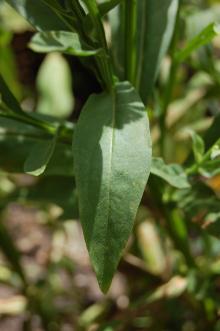
Helenium ‘Wesergold’ (27/07/2013, Kew Gardens, London)
Position: Full sun
Soil: Moist, well drained
Flowering period: Late summer to early autumn
Eventual Height: 75cm
Eventual Spread: 50cm
Hardiness: 5a, 5b, 6a, 6b, 7a, 7b, 8a, 8b, 9a
Family: Asteraceae

Helenium ‘Wesergold’ Flower (27/07/2013, Kew Gardens, London)
Helenium ‘Wesergold’ is a deciduous herbaceous perennial with a clump forming, upright habit. Its mid green leaves are simple, lanceolate, up to 12cm long, 4cm broad and borne alternately on the upright flowering stems. Its yellow flowers are daisy like, have a distinct brown center cone and are up to 6cm across.
Helenium ‘Wesergold’ is commonly known as Sneezeweed ‘Wesergold’. This genus of plant are native to the Americas.
The etymological root of the binomial name Helenium was named for Helen of Troy; in ancient mythology it was said that she was collecting it when she was abducted or occasionally that it sprang forth from her tears; a popular motif in Greek mythology.
Helenium ‘Wesergold’ may be useful to the landscape architect as part of a prairie type planting scheme or as part of a cottage garden style scheme. This perennial is drought tolerant once established.

Helenium ‘Wesergold’ Leaf (27/07/2013, Kew Gardens, London)
Ecologically, Helenium ‘Wesergold’ is attractive to pollinating insects (including butterflies and honey bees). Its leaves are attractive to the larvae of some species of Lepidoptera.
The Royal Horticultural Society have given Helenium ‘Wesergold’ their prestigious Award of Garden Merit in 2001.
Helenium ‘Wesergold’ prefers moist, fertile, well-drained soils. It tolerates most pH of soil.
Helenium ‘Wesergold’ requires little to no maintenance, this plant may be deadheaded to prolong flowering. Large clumps may be divided every two or three years in spring.

